#mortuary archaeology
Explore tagged Tumblr posts
Text
Why didn't someone tell me that researching a niche area of archaeology would be difficult... its almost as if there's barely any research on this... who could have known... :'D
#archeology#archaeology#prehistory#prehistoric#research#EPQ#arabian peninsula#palaeolithic#neolithic#ancient history#classics#dark academia#dark acadamia aesthetic#burial practices#mortuary archaeology#burial rites#research project
7 notes
·
View notes
Text
Life-Sized Mortuary Doll from Siberia, c.250 CE: a small pouch filled with cremated human remains was tucked into the body of this mannequin, which was then stuffed with grass, dressed in furs, and buried

The mannequin measures about 1.5 meters (nearly 5 feet) tall, and it was crafted out of leather, fur, woollen fabric, tendon thread, silk, and grass. This is one of several mortuary dolls that have been found at the burial complex known as Oglakhty cemetery, which is located in the Oglakhty mountains of southern Siberia.

The mannequin's face was created from a patch of red woollen fabric; a rolled-up piece of leather was tucked beneath that patch in order to create the shape of the nose, while leather flaps were used to form the ears. Several black lines were also drawn across the face using charcoal.

The mannequin was positioned with its head resting atop a leather cushion filled with grass and reindeer fur.

Oglakhty cemetery is associated with the Tashtyk culture of southern Siberia. This article describes their unique burial practices, which often included a mix of mummification and cremation rituals:
The communities belonging to this group left numerous burial sites with an expressive funeral rite famous for its tradition of funeral masks and ‘dummies’: leather-made models of human bodies up to 1.5m in length, stuffed with grass, and containing charred human bones.
Of special interest is the fact that different rites were used to bury individuals in the same grave: the mummies and dummies both contained human bones. Remains of the mummies, i.e. dry bodies with trepanned skulls and faces covered with gypsum masks were lying side by side with the dummies.
And as this article notes:
These mannequins or so-called ‘dolls’ are the only surviving examples of burials of this type.
It's believed that the mannequins are dressed in clothing that was originally worn by the dead people they represent. Some of the mannequins also have plaits of human hair that were likely taken from the dead just prior to cremation; the hair was then used to form neatly-braided hairpieces that were typically placed upon the mannequins' heads.
Many of the graves at Oglakhty cemetery exhibit a peculiar mix of both inhumation and cremation. That blend of rituals is often attributed to the arrival of peoples/traditions from other regions, and the cultural diffusion that gradually occurred as a result:
Different ways of burying people in the same graves in the early Tashtyk cemeteries may reflect their different origins: descendants of local population and immigrants living and buried alongside each other.
Sources & More Info:
Antiquity: Pastoralists and Mobility in the Oglakhty Cemetery of Southern Siberia
Masters of the Steppe: Mummies and Mannequins from the Oglakhty Cemetery in Southern Siberia
Quarternary International: New Results of Radiocarbon Dating from the Oglakhty Cemetery
Research Square: First Ancient DNA Analysis of Mummies from the Post-Scythian Oglakhty Cemetery
Archeotravelers: The Face Hidden Behind the Mask
Great Sites of the Ancient World: Siberia's Oglakhty Mountains
#archaeology#artifacts#history#anthropology#oglakhty#mortuary dolls#mannequins#cremation#mummification#burial practices#siberia#russia#funerary rites#rituals#tashtyk#scythians#cultural diffusion#mummies and dummies
92 notes
·
View notes
Text


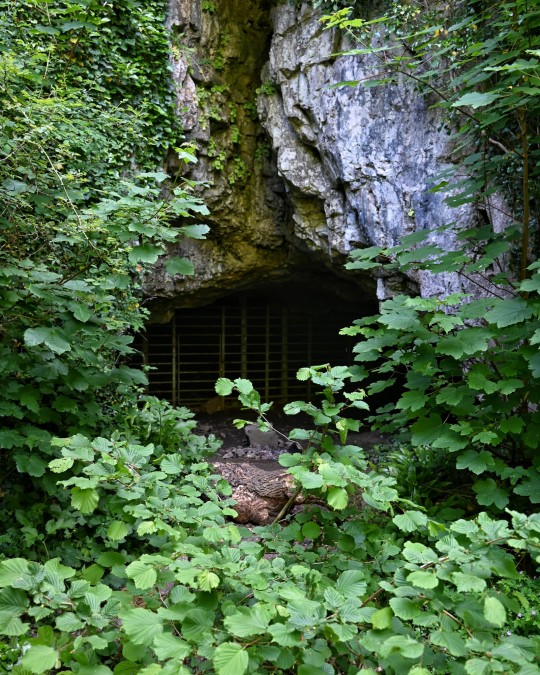
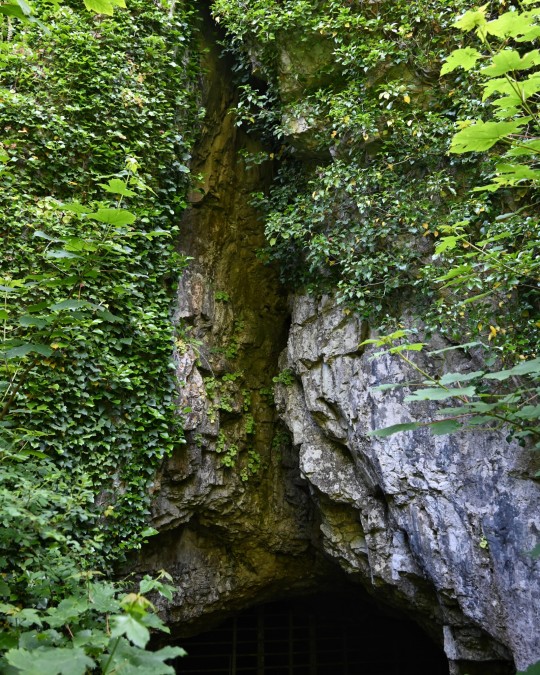
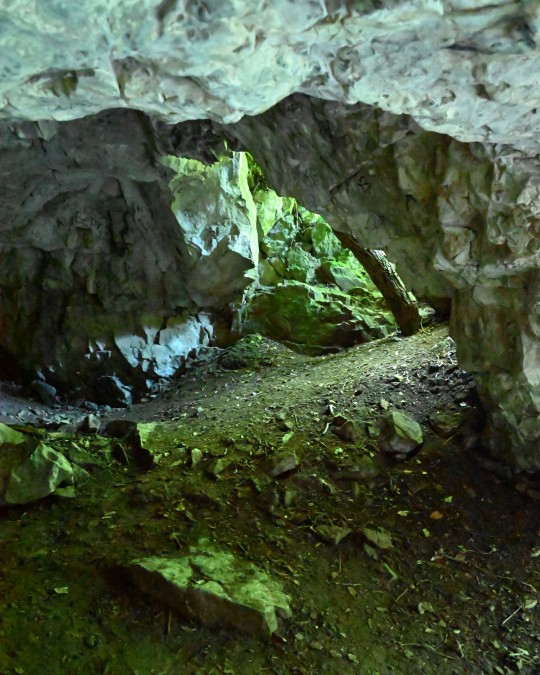
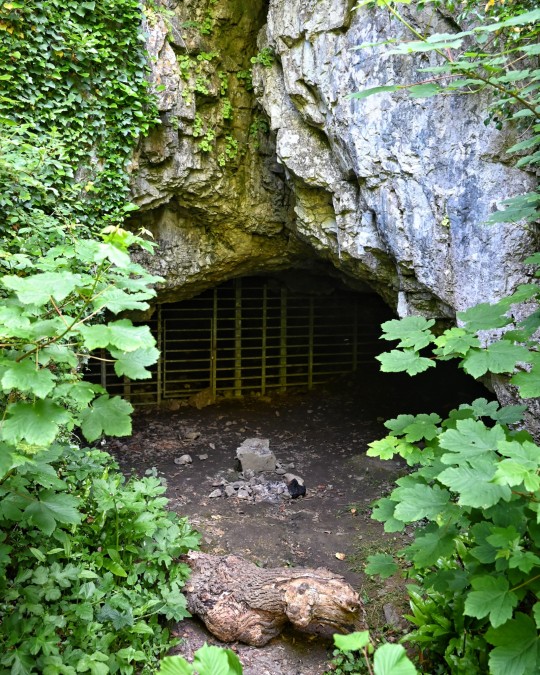
Cathole Cave Prehistoric Site and Neolithic Mortuary, Gower Peninsula, nr. Swansea, Wales
#ice age#stone age#bronze age#copper age#iron age#neolithic#mesolithic#calcholithic#paleolithic#prehistoric#prehistory#caves#cavern#cave living#archaeology#ancient living#ancient sites#mortuary#ritual#wild places#wales#cathole cave
202 notes
·
View notes
Text
New Discovery in the Giza Pyramid Complex
While the Giza pyramid complex is fairly well explored, archaeologists are still finding things hidden beneath the sands.

By KennyOMG - Own work, CC BY-SA 4.0, https://commons.wikimedia.org/w/index.php?curid=40998161
Giza pyramid complex was used by the fourth kingdom of Ancient Egypt, from about 2600 BCE to 2500 BCE, during which time, the Great Pyramid, the pyramid of Khafre, and the pyramid of Menkaure as well as the Sphinx. Within the remains are many temples and workers housing. It covers about 160 square kilometers and is about 9 km west of the Nile River. It has been officially excavated since 1903 CE by many nations and archaeologists.
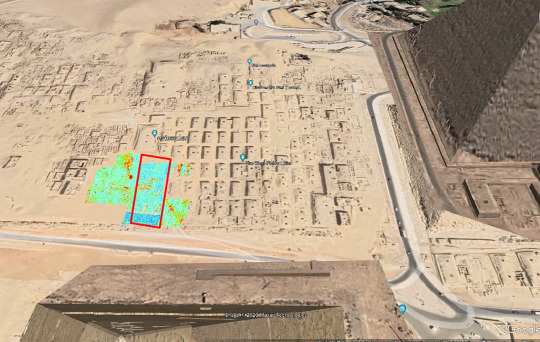
Source: https://onlinelibrary.wiley.com/doi/full/10.1002/arp.1940
Recently, however, a group of scientists were studying an area that appeared vacant, lacking any surface features, with ground penetrating radar (GPR) and electrical resistivity tomography (ERT) to see what there might be in an empty area of an otherwise densely packed mortuary area. This area is about 80m east to west and 110m north to south on the southwestern portion of the plateau. This area has no surface features to reveal anything below the sand, so the team used GPR and ERT to look below the sand on the hypothesis that there was likely something in the area. With the addition of modern global positioning satellites, it is possible to map what is below the surface to an accuracy of 1cm.

Source: https://onlinelibrary.wiley.com/doi/full/10.1002/arp.1940
In addition to finding the water table, which is more than 10m below the surface, they found several anomalies that appear to have regular features, the largest being an L-shaped feature that's 96cm below the surface and measures 10m by 15m. GPR and ERT are unable to determine what this structure is made of, nor what a deeper structure below it are made of, only that it might be loose sand or a void, which is a contrast to the compacted sand above them. This study does allow them to focus future archaeological studies in the area.
7 notes
·
View notes
Text
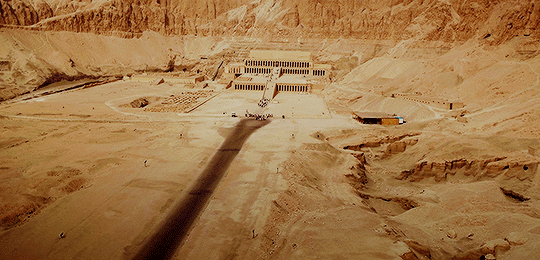
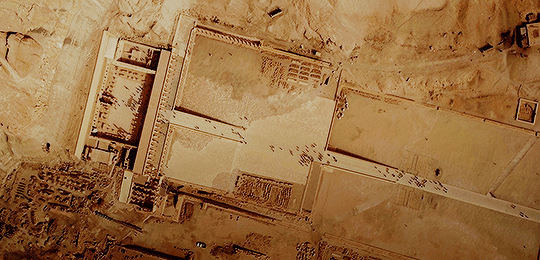
Mortuary Temple of female pharaoh Hatshepsut at Deir el-Bahari.
EGYPT FROM ABOVE (2020) — (1.01) Egypt's Ancient Empire
#egypt#ancient egypt#egyptology#archaeology#historyedit#mine#my edit#documentary#hatshepsut#deir el bahari#luxor#mortuary temple#18th dynasty
234 notes
·
View notes
Text
It official!
I’m going to grad school in the fall! Archaeology degree #2 here I come!
If anyone has advice regarding doing a masters in mortuary archaeology, please share! I’m nervous about the move overseas, but super excited to get into this specialty!!
3 notes
·
View notes
Text

These microliths were found in an excavation done by the Israel Antiquities Authority next to Mashabei Sade. The excavtion at the site (a mortuary complex) yielded finds from Yemen (2000km distant!!!!). This is the first time that such tool were found in Israel.
Read our Paper
Download link https://authors.elsevier.com/a/1k8X9Vu805qRU
0 notes
Text
'this is a juan, not a juanita' dios mio...
#mhac.txt#i shouldn't laugh so hard at that#also the cruise part of that [ask a mortician] video makes me want to do.#well i don't know if it's a subsection of medical anthro but. some kind of anthro (or maybe even social work) that.#connects people and mortuary practices like funerals. obviously there's plenty of archaeological and cultural study of practices themselves#but making that linkage between clients and homes. especially to up the competence of the homes (or even cruise lines)
1 note
·
View note
Text
Reading this blog and procrastinating what I should’ve been doing at the moment, but it’s super helpful if you want to know more about the Anglo-Saxon and Viking material culture but don’t want to be bored to hell. All articles are done by an archaeologist specializing in mortuary archaeology, and he has already written several ones about burials and pagan practices during that time through the lens of The Last Kingdom. I’ve linked one of his posts before on ao3 when discussing about the historical accuracy of Alfred’s tomb effigy in the show under the pic Prayer from the Pagan, but didn’t really had the time to check others out. I just did it and find his other articles are actually super interesting to read as well.


For instance, back when I post this pic in January I said the colour palette was inspired by the Alfred jewel, but I completely forgot that it actually appeared in the show (2x04) where Alfred handed it to Æthelwold and said “Take this. It is a symbol of my kingship. Bear it with authority.”, which might be partially true but is hilarious if you give it another thought.

Because, why, in God’s name, would Alfred hand an ARTEFACT version of the piece he commissioned himself to his nephew? As Prof. Williams already stated (in this post), the Alfred jewel has long been assumed to be the handle part of a pointer stick for following words when reading a book, and if you look at the artefact itself it is quite clear that there’s a part that’s been missing as well. The reason why scholars think it has something to do with Alfred is because:
1) It’s written. The text on the frame literally says that “ÆLFRED MEC HEHT GEWYRCAN”, which means “Alfred ordered me made”. The more detailed explanation below (with the help of beloved wikitionary since I don’t understand Old English at all)
ÆLFRED (subject) Alfred, obviously MEC (object) me; accusative of iċ (I), but in the West Saxon dialect it’s actually an uncommon version of iċ’s accusative and is more often seen in the Anglian dialect. The frequently-used version for West Saxons is mē HEHT (verb) ordered; third-singular past tense for hātan (to call; to order etc.), often followed with infinitive verbs, cognate with heißen in German GEWYRCAN (verb) to make; I honestly don’t know if “to make” and “to be made” is just the same word in OE help And since the word order in OE is random as hell thanks to the case system (much like German which I eventually gave up learning because I don’t have a brain big enough for that. IT MAKES NO SENSE TO A NATIVE MANDARIN SPEAKER THANK YOU), it is eventually translated into “Alfred ordered me to be made”.
2) It was discovered in Somerset and has been dated to the late 9th century, and we all know what Somerset meant to Alfred
3) Alfred did say he would send a copy of his translation of Gregory the Great’s Pastoral Care to every episcopal see in his kingdom in the preface to it, with the book accompanied “an æstel of 50 mancuses”. Mancus was a term to denote a gold coin or a unit for coins worth about a month’s wage for a skilled worker, such as a craftsman or a soldier. Whatever that æstel is it must be worth hell LOTS of money
But honestly while I do think this interpretation sounds very much plausible I’m thinking about other possibilities as well - how many Alfreds exactly existed during his time? We know that Æthel in OE means noble, so people bearing this prefix in their names were usually royal members or at least aristocrats, but what about Alfred? Was Alfred a popular name? Or was it unique enough that he could just go by this name without mentioning his title at all? Imagine if it were an Æthelred who made this, who the hell would know which one of these it was referring to, Æthelred the King, Æthelred the Ealdorman, Æthelred Ealhswith’s father, or even Æthelred the fucking Archbishop??? And yeah, I know Alfred was the king ™ here and there isn’t really much space left on the frame after all, but surely it wouldn’t cost a bone to add a cyning behind his name, right?
Sadly, as it was in the pre-Domesday-Book era, I can’t find the statistics of Anglo-Saxon names at that time (but keep in mind that there were at least 19 Alfreds worthy enough to be mentioned in Domesday Book even after the conquest. I don’t know if this says anything at all but I do want to mention it) What I’m trying to say is while it is highly highly highly likely (and I do believe and want to believe in this theory!), we cannot be one hundred percent certain that this jewel was really from the Alfred we’re talking about. And even if it was, it apparently wouldn’t be carried around by Alfred like THAT. Because that would be like, “Bear this with authority! Even though the symbol of my kingship is broken!”, said Alfred to a king wannabe. Lol.
The other thing I want to mention is this post about the show’s use of Fuller brooch, the one Alfred wore in S2 when he was in his war gear.


First of all, it is indeed dated to late 9th century and is assumed by scholars to be made by metalworkers of Alfred’s court. Everything is fine except I don’t think you would want to wear jewelry that luxurious to war…but then there’s this thing:
MEET GIANT FULLERS!

Well, can’t blame them since I am basically doing the same thing with my drawings (i.e. using patterns on jewelry and illustrations from manuscripts for embroidery design). But it’s worth noting that designs that are suitable for one art form doesn’t mean they can be applied to another well, and that’s why I claim my art is inspired by Anglo-Saxon art but NOT historical accurate for the Anglo-Saxon period. The reason I still do this and think it is understandable for TLK crew to do so is because we simply don’t have that many resources to reference from when it comes to this time period, and fabrics and wooden buildings are just extremely hard to preserve by nature. Instead of screwing up the design on your own, it just has more fun to add real historical elements into your work. Look at those easter eggs!
Ok, that’s it. I hope you enjoy my long rant and have a good read from Prof. Williams’s works!
#I’m so sorry for everybody who did read the whole thing omg#I hope you’re that kind of person who thinks it is sometimes fun to waste your time#I certainly didn’t anticipate this to be this embarrassingly long HELP#nerd is nerding#that will happen again lmao#the last kingdom#alfred the great#archaeology#british history#king alfred#anglo saxon#hikaru.txt#tlk alfred#anglo saxon archaeology#archeology#oh and all in all i really hope dd did get to bring these replicas home tho bc THAT WOULD BE SO FUCKING COOL
39 notes
·
View notes
Text
Heritage News of the Week
Discoveries!
As construction crews churned up dirt to renovate a football pitch in Vienna last October, they happened upon an unprecedented find: a heap of intertwined skeletal remains in a mass grave dating to the first-century Roman empire, most likely the bodies of warriors killed in a battle involving Germanic tribes.
Obsidian artifacts unearthed in Alberta offer new clues on prehistoric trade routes
Inky black shards of volcanic glass unearthed in Alberta are helping researchers trace the movements of Indigenous people across Western Canada centuries ago.
“House of Life” among new discoveries at the Ramesseum
A joint French and Egyptian archaeological mission has made several major new discoveries at the Ramesseum, the mortuary temple for Ramesses II.
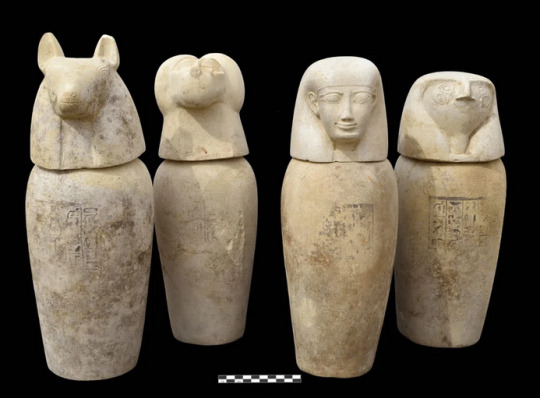
Walls of ancient Greek colony of Selinunte discovered
Italian authorities announced a series of new discoveries at the site of Selinunte that underscore the city’s illustrious past
A life-sized statue of a bejeweled ancient priestess is unearthed in Pompeii
Archaeologists in Pompeii have made the astonishing discovery of two life-sized relief sculptures of a man and a woman draped in classical robes. The pair, possibly husband and wife, stand within a niche on the boundary wall of a monumental ancient tomb.
Ukrainian soldiers unearth ancient Greek burial
Ukrainian soldiers digging defensive fortifications stumbled upon an ancient Greek burial site in southern Ukraine.
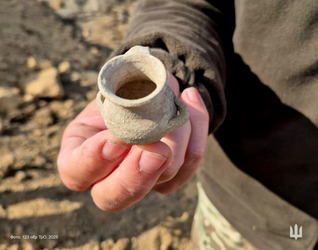
Tiny pot!
Ancient mausoleum with gladiator’s epitaph unearthed in Italy
Archaeologists excavating a necropolis in Liternum Archaeological Park in Campania, southern Italy, have uncovered two ornate funerary enclosures, one of which belonged to a gladiator and bears an epitaph etched in marble.
Researchers study erratic boulders from Frosh Giant legends
A study funded by The National Science Centre, Poland, has analysed both the geological and mythical origins of the erratic boulders scattered across northern Poland.
Rare wall paintings found in Cumbria show tastes of well-off Tudors
Rare and fantastical 16th-century wall paintings which shine light on the interior design tastes of well-off Tudors have been revealed in a former hunting lodge.
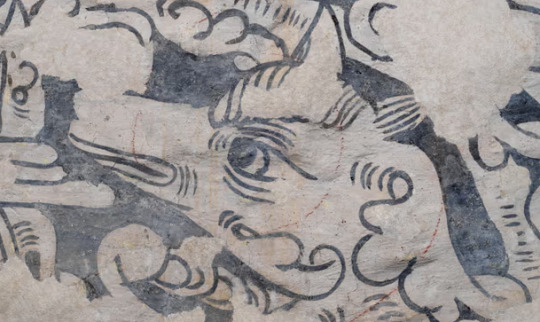
3-year-old picks up 'beautiful stone,' discovers 3,800-year-old scarab amulet in Israel
A 3-year-old girl who was walking with her family along a trail in Israel unexpectedly found a piece of history: a 3,800-year-old scarab amulet.
Extensive Roman settlement found beyond the borders of the Roman Empire
Archaeologists excavating in Delbrück-Bentfeld, northwestern Germany, have uncovered evidence of an extensive Roman-era settlement beyond the borders of the Roman Empire.
More caves discovered in Nottingham’s hidden subterranean world
Nottingham, nestled in England’s East Midlands, is famously known as the legendary home of Robin Hood. But beyond its folklore, the city also boasts the UK’s largest network of caves, carved by hand into the soft sandstone bedrock as early as the 9th century AD.
Stunning reconstruction reveals warrior and his weapons from 4,000-year-old burial in Siberia
A new full-body reconstruction depicts a warrior wearing armor and holding weapons, all of which were found in a 4,000-year-old burial in Siberia.
Hallstatt dagger discovered on Baltic Coast
Researchers from the St. Cordula Association for the Protection of Monuments have discovered a rare Hallstatt-era dagger, revealed after a storm caused a section of a Baltic Sea cliff to collapse.
Unknown human lineage lived in 'Green Sahara' 7,000 years ago, ancient DNA reveals
Researchers analyzed the ancient DNA of two mummies from what is now Libya to learn about people who lived in the "Green Sahara" 7,000 years ago.
AI assists archaeologist in mapping Angkorian-period structures
Archaeologists have created deep learning models, specifically with DeepLab V3+, for semantic segmentation to identify previously unknown reservoirs from the Angkor period.
Researchers posit new theory about children's role in prehistory
A new study suggests that children may have played a special role as mediators between the physical and spiritual worlds,
Traces of Ecuador’s first colonial-era city unearthed in Riobamba
Archaeologists from Ecuador’s National Institute of Cultural Heritage have uncovered remnants of an early colonial-era city that was destroyed by a devastating earthquake in 1797.
Oldest vanilla pod in Europe found in Prague
Excavations within Prague Castle yielded the oldest vanilla bean pod in Europe. Radiocarbon dating indicates that it was placed there between 1513 and 1666, a time that coincided with the reign of Holy Roman Emperor Rudolf II.
Museums
From Guy Burgess’s briefcase to microdots secreted in talc, an exhibition reveals remarkable items from the agency’s archives – and the extraordinary stories behind them
Take two Van Goghs daily: the growing popularity of museum prescriptions
Research backs schemes that encourage doctors to prescribe time in cultural institutions to boost mental health and reduce loneliness
Smithsonian director pledges museum’s independence amid White House order of internal review
The Smithsonian Institution’s leadership is standing firm after the Trump administration ordered a review last month of its exhibits, accusing the museum network of pushing a “race-centered ideology.”
Dozens of museum agency workers put on leave amid Trump overhaul
Processing of 2025 grant applications has been halted after Trump moved to dismantle the Institute of Museum and Library Services.
US museums seek to provide safe spaces for LGBTQ+ communities amid government rollbacks of their rights
As Republicans and the Trump administration target DEI initiatives and queer and trans communities, vocal leaders at a few institutions are standing firm
Three historical treasures rescued from London’s River Thames
Thanks to the efforts of mudlarks, Londoners can marvel at Tudor headwear and an elaborate Viking weapon.
God, I wish I could see this exhibit
'Last in England' smashed medieval statue recreated
A 15th century statue that was found smashed into 170 fragments behind a church wall has been painstakingly pieced together using computer animation.
Museums in southern Brazil still recovering after last year’s floods
Damage and destruction decimated visitor numbers to cultural events and institutions last year but optimism is high they will return in 2025
Yorkshire Museum crowdfunds to acquire ‘game-changing’ iron age hoard
The Yorkshire Museum in York is close to raising £30,000 through a crowdfunding campaign to acquire a major iron age hoard recently discovered in the local area by a metal detectorist.
Medieval scroll found in shoebox goes on display
A rare medieval illuminated manuscript uncovered in the archive of a York convent is going on display for the very first time.
Museums are losing social media followers amid users' mass X-odus
Some institutions have ditched their accounts in protest, while others have chosen to “quiet quit” and stopped posting on the Elon Musk-owned platform
Repatriation
The famed museum recently returned a 12th-century Buddha sculpture that it says was stolen from the Kathmandu Valley. However, the institute’s announcement failed to mention the statue had once belonged to wealthy donor Marilynn Alsdorf.
Heritage at risk
Videos of Sudan’s national museum showing empty rooms, piles of rubble and broken artefacts posted on social media after the Sudanese army recaptured the area from the paramilitary Rapid Support Forces in recent days show the extent of looting of the country’s antiquities.
EPA head shutters agency’s National Environmental Museum
In a statement issued on March 31, EPA administrator Lee Zeldin said the closure would save taxpayers about $600,000 per year. The small museum was created in 2016, dedicated to the nation’s environmental history, and included exhibits about prevention measures during the Covid-19 pandemic, environmental justice, and efforts to address climate change.
$600,000 a year is like one day of the military budget
ETA: I have been informed it's actually less than 30 seconds of the daily military budget o_O
Historians condemn executive order targeting Smithsonian
The American Historical Association, a D.C.-based advocacy group, has issued a statement condemning a recent White House executive order targeting the Smithsonian Institution, which relies on federal funding to drive a significant part of its operation.
New York Attorney General sues Trump administration over museum and library funding cuts
New York State Attorney General Letitia James has filed a lawsuit—alongside 20 other attorneys general—against the Trump administration over an executive order that effectively shuts down three federal agencies responsible for supporting libraries, museums, minority-owned businesses, and labor mediation services.
What the dismantling of USAID means for world heritage
Does USAID still exist? For the heritage world, this – and the fate of heritage projects connected to shrinking amounts of development funding more generally – is a pressing one. Building on previous American efforts in technical assistance during the early years of the cold war, the Kennedy administration founded USAID in 1961 at the start of the UN’s first ‘Development Decade’. Under the second Trump administration, however, the organisation has found itself cut to ribbons.
Odds and ends
Amid the site in rural Jamaica that once belonged to a Guardian financier may lie a treasure trove of artefacts that tell the story of Britain’s history of colonisation and enslavement.
Bid to boost Hadrian's Wall dog ranger volunteers
Volunteer dog rangers are being recruited to help visitors at Hadrian's Wall. Current rangers - golden retriever Mr Darcy and Bear, a mioritic shepherd dog - have been walking the area since last summer along with their owners, who offer advice and hand out poo bags, water and treats.
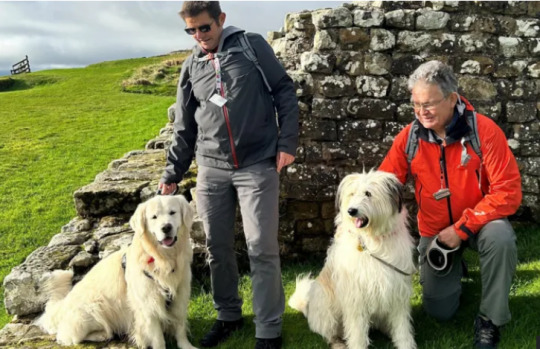
The best museum volunteers
Salvaging the historic tiles of California’s burned fireplaces
After devastating fires blazed through the region, residents are holding on to the intricate glazed tiles that survived — small but meaningful remnants of their homes.
Dublin's Molly Malone statue to get stewards to stop 'groping'
Stewards are to be stationed next to a statue of Molly Malone in Dublin to discourage people from touching it. Dublin City Council is running a pilot scheme for a week in May after complaints of people groping the sculpture's breasts.

Cute when it's a dog statue, weird and kind of gross when it's a woman
'I love my country': Ken Burns on showing the dark parts of US history
Ahead of his upcoming PBS documentary, The American Revolution, acclaimed film-maker Ken Burns tells BBC special correspondent Katty Kay about his unique approach to chronicling US history, from war and conflict to baseball and jazz.
In search of Greece's once-great Jewish city
Once home to a thriving Jewish majority, Thessaloniki holds fragments of a lost world. One traveller's journey to find them leads to something even more powerful: living memory.
Point:
Counterpoint:
Dinosaur tracks uncovered at site of Bonnie Prince Charlie’s refuge
When Bonnie Prince Charlie fled the Scottish Highlands after defeat at the Battle of Culloden, his route may have crossed the fossilised footsteps of massive meat-eating dinosaurs, researchers say.
Bonnie Prince Charlie being eaten by a theropod would be an incredible ending to Outlander
#heritage news of the week#museums#it's looking grim for us institutions#archaeology#history#more historic sites should have dog volunteers#also stop groping molly malone you weirdos#paleontology#the post is extra long this week
12 notes
·
View notes
Note
🪦🪦🪦🪦🪦🪦🪦🪦🪦🪦
ohohohoho an interesting choice! that's Many emojis so you get an extended snippet lol
“Any experience in the field? Mortuary studies, archaeology, the like?” she asks, peering intently at him. Charles resists the urge to fidget. “No, ma’am,” he says. “Been to my gran’s funeral, though,” he jokes, but she doesn’t laugh. “I see. And how fast a runner are you?” She taps her pen on her clipboard, looking at him expectantly. His eyes dart to her shoes, a pair of well-worn sneakers. “Um. I play cricket, third batsman,” he offers. “I never, like, clocked it before though.” “Hmm.” She makes a note on her clipboard. Charles is having concerns about his likelihood of getting this job—or if he even wants it anymore. Fuck, Theo said the smoothie shop down the corner was hiring, even if the pay was garbage. Maybe he should just try there.
send me an emoji and i'll post a line from the corresponding WIP!
6 notes
·
View notes
Text

What fandoms do you write for?
Percy Jackson, Heroes of Olympus, Black Butler, Kane Chronicles
Can I read your stuff if I'm not 18+?
I mean, I can't stop you. Just don't, like, tell me. Even though most of the fandoms I write for are usually family-friendly, I focus on topics such as trauma, mental health, suicide, power struggles and dark relationships. While I do believe that teenagers should be allowed to explore a lot of these topics, please do not take all of these fics as a way to cope. If you find yourself recognizing symptoms or affects these characters have from mental health, please reach out to someone.
How do you get your writing so realistic?
Trauma. 9/10 times whatever Percy is going through draws inspiration, sometimes heavy inspiration, from my own experiences and thoughts. Please do not try this at home.
Do you accept requests?
No. As stated above, these fics are born as a way for me to vent. They come to me. Therefore, I probably couldn't do your request justice, or do it in a way satisfactory to me.
Can I translate your fic?
Not at this moment.
When do you update?
Whenever I want. I am in college, working on a conference presentation, and volunteering on historical projects. I write when I have the chance.
Your fics are too dark. Can you tone them down?
There are plenty of non-dark PJO fics out there. I aim to present the raw, ugly truth of what Percy, and many other demigods, have gone through and the lasting effects of trauma in a way Rick cannot delve into given his rating. It doesn't have to be palatable for everyone. There are warnings slapped on the fic for a reason.
Do you have a tip jar?
No. Fanfiction was meant to be free, and should remain free. If you want to show your appreciation, leave a comment or ask!
▬▬▬▬▬▬▬▬▬▬▬▬▬▬▬▬▬▬▬▬▬▬▬▬▬▬▬▬▬▬▬

OTHER PLATFORMS:
Tiktok
AO3
Reddit
THE WRITER
I am currently a uni student about to graduate and then pursue her master's. I'm studying archaeology and Egyptology, and have specific interests in the mortuary (death/afterlife) practices of the Ancient Egyptians, as well as the history of the discipline itself and the dehumanization of cultures in the process of being studied by archaeology.
I started writing for school. My mom homeschooled me and made me read and write for 30 minutes a day. I honestly hated it at first lol but then I slowly fell in love with creating my own worlds and stories. My first completed fanfiction was about an OC daughter of Marvel Loki.
I absolutely love dissecting characters in my writing. It's so fun to pick them apart and see what makes them tick, what their flaws are, what their greatest fears and loves are. Percy Jackson is honestly the easiest person to write for in this sense, because I saw so much of myself in him.
Please come yell at me about him, I would love to talk about him!
Some random facts about me: I was adopted, I lowkey have an obsession with the Undertaker from Black Butler, I love the dark and macabre, and I'm currently studying abroad (can you guess where?). I'm absolutely a cat person, and if there is a cat around, I will be petting it for the next hour. I have been late to class because of this.
#percy jackson#fanfiction#pjo#pjo fandom#heroes of olympus#percy jackon and the olympians#riordanverse#rrverse#pjo series#pjo hoo toa#black butler#kuroshitsuji#archive of our own#writing#fandom
13 notes
·
View notes
Text

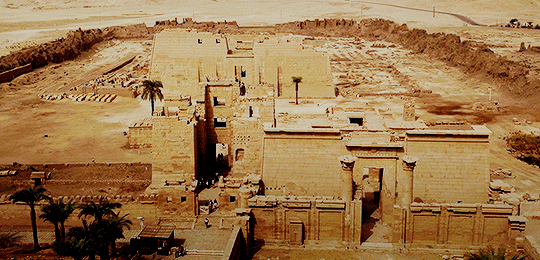
EGYPT FROM ABOVE (2020) — (1.01) Egypt's Ancient Empire
#egypt#ancient egypt#egyptology#archaeology#historyedit#mine#my edit#documentary#doc: egypt from above#medinet habu#ramesses iii#luxor#thebes#mortuary temple
125 notes
·
View notes
Text
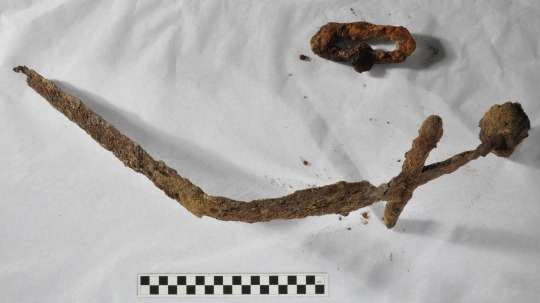
1,000-Year-Old Crusader Sword and Cemetery Found in Finland
Researchers identified eight burials, but they say the graveyard may hold dozens—or even hundreds—waiting to be discovered.
Archaeologists in Finland have unearthed a graveyard, an iron sword and other artifacts that date back roughly 1,000 years.
Over the summer, a landowner stumbled upon the site when he was installing geothermal pipes on his property in the small town of Salo. After a rainy day, he noticed something strange sticking out of the ground and decided to investigate. He pulled out a rusty but intact iron sword with a bent blade, a straight hilt and an oval pommel. The landowner alerted Juha Ruohonen, an archaeologist at Finland’s University of Turku, who called in Sanna Saunaluoma, an archaeologist at the Turku Museum Center.
Thinking the site would yield more discoveries, the researchers decided to continue excavating. And they were right: They found human bones, clothing remnants and something they suspect to be a wooden coffin.
They also uncovered an elaborately decorated leather belt, which a statement from the University of Turku described as “remarkable,” per Google Translate. Attached to the partially preserved leather, they found 30 square bronze rings and cross-shaped pendants, as well as a buckle, strap dividers and several animal head buckles.
They say all of these artifacts belonged to one grave, which is particularly interesting because “archaeological textiles related to men’s graves are very rare,” per the statement.
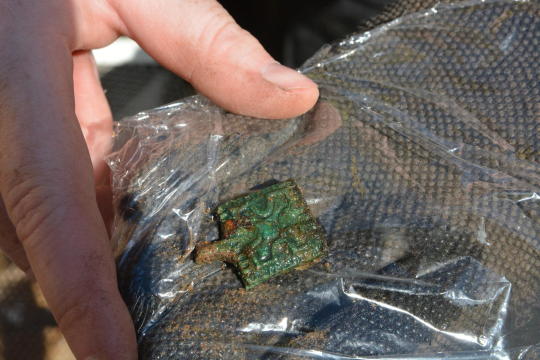
As they continued to scour the area, they discovered eight graves, which they suspect are part of a much larger mortuary cemetery. All told, the researchers say the site could hold dozens—or even hundreds—of graves. The burials discovered so far appear to follow Christian customs.
Radiocarbon dating is currently underway. The researchers suspect the bones and artifacts date to between 1050 and 1150 C.E., a period they call the Crusader era.
During this time, the Swedes supposedly brought Christianity to Finland in an event known as the First Swedish Crusade. However, “no corroborating archaeological data” exists for this event, which first appears in written records in the late 13th century, writes Heritage Daily. “Academics debate whether this crusade actually took place.” The discoveries could help shed new light on this mysterious period in Finland’s religious history.
The graves and artifacts were found beside a medieval stone church, which experts thought had been established in the 15th century. However, the new finds suggest there was a “much earlier church organization” in the area than they previously assumed, per the statement.
“The observation can be considered very significant from a research point of view, as mortuary cemeteries from the time of the Crusades are clearly less known in Finland than cremation cemeteries that preceded them in time,” per the statement. “So far, this is also the only confirmed burial burial dating to the end of the Iron Age from the Salon or Uskelanjoki valley.”
Looking ahead, the researchers say they will continue working at the site and analyzing their discoveries until at least 2024.
By Sarah Kuta.
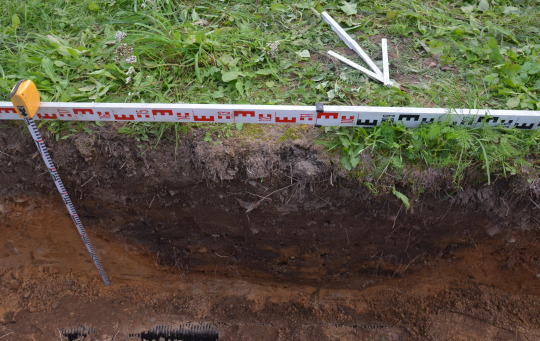
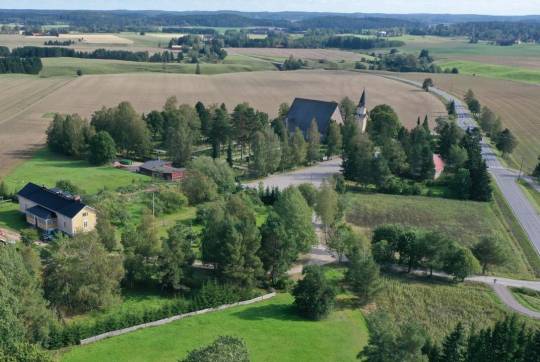
#1000-Year-Old Crusader Sword and Cemetery Found in Finland#Salo Finland#ancient grave#ancient tomb#ancient sword#ancient artifacts#archeology#archeolgst#history#history news#ancient history#ancient culture#ancient civilizations#iron age#crusader period
25 notes
·
View notes
Text
free summer reading groups in ancient studies
howdy <3 Saving Ancient Studies Alliance (SASA) in a volunteer-driven nonprofit that works to stimulate interest in the ancient studies and combat downward trends in humanities education across the globe. to support this mission, they're offering 16 FREE summer reading groups. check below the cut for more info.
Painted Stories: Reading Maya Mythology in Codex-Style Ceramics, June 1-29, Thursdays at 4PM EST: This reading group introduces participants to key mythological themes in Classic Maya (250-900 CE) material culture, particularly as seen on a subset of ceramic vessels known as "codex-style" vessels. No prior knowledge is necessary. RSVP HERE
The Alexander Romance, June 2-30, Fridays at 11AM EST: This reading group introduces participants to the ancient reception of Alexander the Great, with a focus on the Alexander Romance. Attend to join discussions of the ancient Macedonian hero through texts in translation. No prior knowledge is necessary. RSVP HERE
Is This Your Neighbor, Is This You? Looking at Others and Ourselves in Theoprhastus' "Characters," June 2-16, Fridays at 2PM EST: This reading group introduces participants to philosopher and natural scientist Theophrastus (371-287 BCE) and his thirty unsavory "Characters" inspired by real citizens of ancient Athens. Explore the ideas of stereotype and ethics, and examine modern methods of perception. No prior knowledge is necessary. RSVP HERE
Mother, Murderer: Medea's in Antiquity and Beyond, June 4- July 2, Sundays at 3PM EST: This reading group introduces participants to Medea, the infamous Colchian princess who endures in ancient mythology and beyond. Readings will range from Euripides and Ovid to Toni Morrison. Discussion will explore themes of revenge and gender studies. No prior knowledge is necessary. RSVP HERE
True Stories: Classical Sci-Fi and Fantasy, June 5-July 3, Mondays at 5PM EST: This reading group will introduce participants to the relationship between Classical works and the genre of science fiction. Discussions will explore similarities and differences through exciting themes of fictional empires, Roman utopia, and spaceships. No prior knowledge is necessary. RSVP HERE
Beyond the Silk Roads: June 8-July 6, Thursday at 9AM EST: This reading group will guide participants through the "Silk Roads" with a particular focus on Central Asia. Discussion will focus on pre-modern globalization, through primary source readings such as the Sogdian merchants' letters and Dunhuang texts. No prior knowledge is necessary. RSVP HERE
She's Just Not That Into You: Unrequited Love in Antiquity, June 8-July 6, Thursdays at 2PM EST:This Reading Group will guide participants through the theme of unrequited love in antiquity, and explore how tales of love and rejection are universal and timeless. Readings include translated texts of ancient poets, such as Sappho and Horace. No prior knowledge is necessary. RSVP HERE
The Pyramid Texts: The Earliest Egyptian Rituals, June 8-July 6, Thursdays at 3PM EST: This Reading Group will guide participants through the oldest religious literature in the world: the Ancient Egyptian Pyramid Texts. Discussions will explore beliefs and myths as present in the mortuary texts, and how they manifested in rituals. No prior knowledge is necessary. RSVP HERE
Tomb Robberies in Ancient Egypt: Prevention, Persecution, and Punishment, June 13-27, Tuesdays at 11:30AM EST:This Reading Group will introduce participants to the methods of Egyptology through primary texts and archaeological sources. With a focus on the Late New Kingdom, discussions will explore the questions of who and why involving tomb-robbing, and traditions of funerary practices. No prior knowledge is necessary. RSVP HERE
Atoms and Void: Lucretius' "On the Nature of Things," June 13-July 11, Tuesdays at 1PM EST: This Reading Group will introduce participants to the great Latin epic De Rerum Natura (On the Nature of Things), and its author Lucretius' key ideas of Epicureanism. Discussions will explore the poem's provocative ideas on pain and pleasure, and how they have impacted early modern science. No prior knowledge is necessary. RSVP HERE
Reading the Abbasid Past: History and Islamic Heritage, June 14-28, Wednesdays at 11AM EST:
This Reading Group will guide participants through the era of the Abbasid Caliphate, or the "Golden Age" of the Islamic World. Exploring a wide range of themes including science, philosophy, and art, discussions will explore the fascinating socio-political lives of the affluent Abbasids and their impact on present-day materials and heritage. No prior knowledge is necessary. RSVP HERE
Queer Lives and Loves in Ancient History, June 14-July 12, Wednesdays at 1PM EST: This Reading Group will use Queer Theory to explore and uncover evidence of LGBT+ lives in the Ancient World. Readings will involve Ancient Greek, Latin, and Near Eastern literature, and participants will be encouraged to challenge Western norms of identity, and modern approaches to historic interpretation. No prior knowledge is necessary. RSVP HERE
Curse Tablets: Personal Communications with the Dead and the Gods in the Ancient World, June 16-30, Fridays at 2PM EST:This Reading Group will explore the relatively unknown realm of curse tablets in the Ancient World. Through evidence left behind by women, men, and slaves over the span of 1,000 years in history, discussions will explore the motivations and consequences of such writings. No prior knowledge is necessary. (RSVP link broken)
Defying the Gods, and Forgotten Female Rage, June 18-July 30, Sundays at 11:30AM EST:This Reading Group will encourage participants to explore the representation of women in heroic tales through significant ancient texts such the Epic of Gilgamesh and Homer. Discussions will focus on the tragedy and anger of female characters in epics, who primarily appear as accessory to male heroism. No prior knowledge is necessary. RSVP HERE
From Harlots to Heroines: Royal Women in the Hebrew Bible, June 29-July 13, Thursdays at 12PM EST: This Reading Group will focus on three royal women in the biblical texts: Jezebel, Esther, and the female lover in the Song of Songs. Reading and discussions will explore primary sources, and how engendered narratives highlight writer bias and impact modern interpretations. No prior knowledge is necessary. RSVP HERE
Unlocking Beowulf, August 4-18, Fridays at 11AM EST:This Reading Group will explore Beowulf as a reflection of both the Norse and Anglo-Saxon worlds. Participants will gain a cultural and historical understanding of the poem, and explore various issues of identity, politics, gender, and nation-making in the Early Middle Ages. No prior knowledge is necessary. RSVP HERE
49 notes
·
View notes
Note
Dude please tell me more about biological anthropology, I fuckin love anthropology I'm hoping to get my masters in it since my college stopped offering a bachelor's in it, but I've never heard of biological anthropology and it sounds like two of my biggest loves come together
(I may in fact be stoned but I'm still Hella interested I just might be slightly incomprehensible/rambly I'd like to be friends you sound cool af I'm autistic af also so I'm also just normally a little weird and incomprehensible)
Thank you for the ask!! I always love yapping about anthropology (especially when it means I can procrastinate research lol)!!
Biological anthropology is a HUGE sub-field of anthropology and covers a lot of different topics. My research is in forensic anthropology, but it also includes medical anthropology, bioarchaeology, evolutionary anthropology, and primatology!
Quick overview of the sub-fields:
Medical anthropology is similar to socio-cultural anthropology (likely what you think of when thinking anthropology) but focuses on how culture affects the body and how the body affects culture. If you want to learn more about it my favourite ethnography is Fresh Fruit Broken Bodies about migrant workers in the US.
Bioarchaeology is the study of the human skeleton in an archaeological context, typically anything older than 100 years (though 50-100 is a little bit of a grey period). It also includes mortuary archaeology which studies how people are buried and what they're buried with. The Archaeology of Death and Burial is a good textbook to get you started.
Evolutionary anthropology is about early hominids and the history of how homo sapiens and the genus homo (as well as the genuses that proceeded it) evolved. The Smithsonian has a great website about human evolution you can check out.
Primatology is probably the field I know the least about. It's pretty self explanatory it's the study of primates. I've never studied it myself so I don't have many resources at my disposal but you can check out the American Society of Primatologists.
Forensic anthropology is my sub-field and the one I know the most about, but I will keep it simple. Essentially forensic anthropology is about studying the human skeleton in a medico-legal context (re: crime). This usually means the skeletons we study are from the last 50 years (again 50-100 is a bit of a grey period). Forensic anthropologists study how to identify people from their skeletons and how trauma affects the skeleton. Forensic Anthropology: Current Methods and Practice is a good place to get started.
All of these subfields have smaller sub-fields and areas of study so if any of them interest you I definitely recommend checking them out!
My research is currently in skeletal age estimation but I've also done research into the inclusion of gender and sex diverse individuals in forensic anthropology previously :)
Let me know if you have any more questions!
4 notes
·
View notes